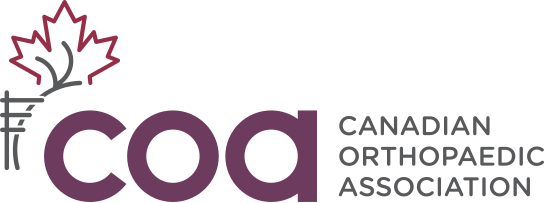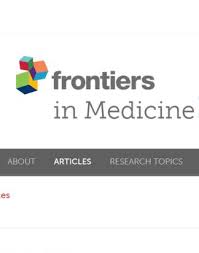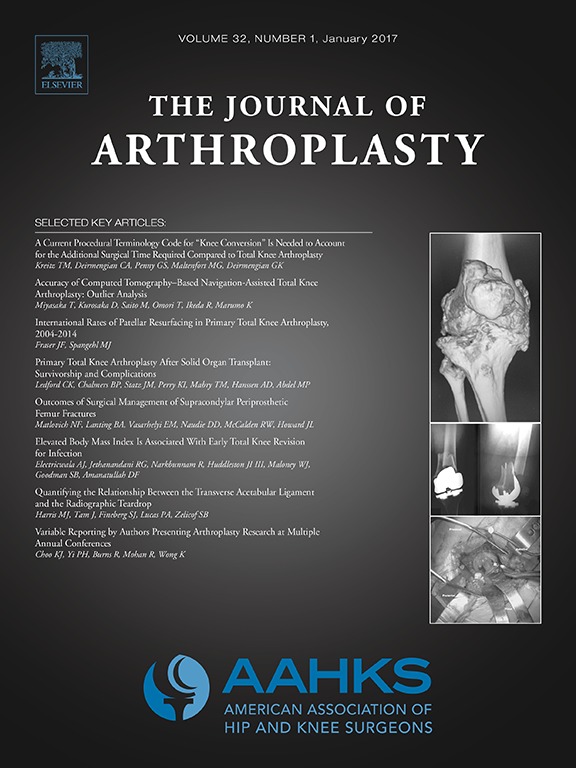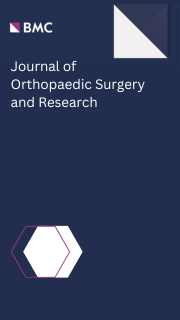PeerView
You are viewing the most viewed ACE Reports by Orthopaedic Surgeons over the last 30 days in all specialties.
Displaying
100%
Synopsis:
One hundred twenty-seven patients undergoing outpatient total hip arthroplasty with the direct anterior (DA) approach were prospectively randomized and compared to fifty-one patients undergoing outpatient total hip arthroplasty with the direct lateral (DL) approach.The primary outcome of interest was the overall cost from a Canadian healthcare payer perspective.Secondary outcomes included costs from a societal perspective, encompassing patient-incurred costs, productivity losses, and informal care.Cost data were collected during hospitalization and via patient-reported diaries after discharge.Overall, the results of the study revealed no significant differences in healthcare payer costs (DA: $7910.19 vs DL: $7847.17, p=0.80) or societal costs (DA: $14657.21 vs DL: $14581.21, p=0.96). These findings suggest...
Read More »
Conference Report
①
Synopsis:
One hundred four patients with end-stage hip joint diseases undergoing primary total hip arthroplasty were randomized to receive intraoperative bone wax (n=52) or no bone wax (n=52).The primary outcome was total blood loss.Secondary outcomes included serum hemoglobin level, change in hemoglobin, thigh swelling (lower limb diameters), range of motion at discharge, length of postoperative hospital stay, and adverse events.Outcomes were assessed on postoperative days (POD) 1 and 3, and during follow-up at 3 weeks and 6 months.Overall, the results of the study revealed significantly lower total blood loss, smaller hemoglobin drop, and shorter hospital stays in the bone wax group. The study concludes...
Read More »
Level 1 RCT
COA 2025: Greater Kinematic Alignment Following Unicompartmental Compared to Total Knee Arthroplasty
Synopsis:
Thirty patients with knee osteoarthritis were randomized to receive either unicompartmental knee arthroplasty (UKA; n=12) or total knee arthroplasty (TKA; n=18).The primary outcome of interest was gait biomechanics, including sagittal and coronal knee angle metrics during walking.Secondary outcomes of interest included the Oxford Knee Score (OKS) and the WOMAC sub-scores for pain, stiffness, and physical function.Outcomes were assessed pre-operatively and at one year post-operatively.Overall, the results of the study revealed that UKA was associated with gait patterns more closely resembling native knee biomechanics, including greater sagittal knee angle correlation and lower coronal knee angle RMSE (F4,25, P=0.010), while PROMs improved similarly in both groups (p<0.001). These findings suggest...
Read More »
Conference Report
Synopsis:
Ninety-eight patients undergoing unilateral knee arthroplasty were randomized to receive either standard care (n=47) or a multicomponent intervention for opioid-free pain control (OFPC) (n=51).The primary outcome of interest was the rate of OFPC at eight weeks.Secondary outcomes included pain levels, patient satisfaction, recruitment and adherence rates, and feasibility metrics such as follow-up and retention.Outcomes were assessed at 3, 6, 9, and 12 months.Overall, the results of the study revealed that 67% of patients in the intervention group achieved OFPC at eight weeks, with high adherence to most components of the intervention and follow-up exceeding 90% at 12 months. These findings suggest...
Read More »
Conference Report
①
Synopsis:
One hundred fourty patients with primary or secondary knee osteoarthritis were randomized to receive either a cruciate-retaining (CR) implant (n=72) or a posterior-stabilized (PS) implant (n=68).The primary outcome was knee function, including range of motion (ROM) and flexion.Secondary outcomes included patient-reported outcome measures (PROMs), complication and reoperation rates, and satisfaction.Outcomes were assessed at baseline, 3 months, 1 year, and 2 years postoperatively.Overall, the results of the study revealed that the PS group had better knee flexion and ROM at 1 and 2 years, but no significant differences in PROMs or satisfaction compared to the CR group. These findings suggest...
Read More »
Level 1 RCT
①
Synopsis:
One hundred seventy-two patients undergoing total knee arthroplasty for osteoarthritis were randomized to receive either 5 mg melatonin (n=86) or 125 mg vitamin C placebo (n=86).The primary outcome was the Pittsburgh Sleep Quality Index (PSQI).Secondary outcomes included patient-reported measures of pain and physical function, opioid prescriptions, medication compliance, and adverse events.Outcomes were assessed at both 6 weeks and 90 days.Overall, the results showed no significant differences in PSQI or secondary outcomes between the melatonin and placebo groups at either time point. The findings suggest...
Read More »
Level 1 RCT
Synopsis:
Thirty-nine patients undergoing total knee arthroplasty were randomized to receive either a CBD-dominant oral cannabis formulation (n≈20) or placebo (n≈19) alongside standard care, beginning 4 weeks preoperatively and continuing for up to 12 weeks postoperatively.The primary outcome was feasibility of trial conduct.Secondary exploratory outcomes included persistent post-surgical pain (PPSP), opioid use, pain interference, physical and emotional function, return to activity, sleep quality, and adverse events.Outcomes were assessed up to 6 months postoperatively.Overall, the results of the study revealed moderate feasibility, with successful enrollment and drug administration at two sites but notable issues with adherence and adverse events.About one-third of participants reported PPSP at 3 and 6 months. These findings suggest...
Read More »
Conference Report
Synopsis:
Fifty-seven patients with end-stage osteoarthritis undergoing total knee arthroplasty were randomized to receive either anatomical alignment (n=24) or mechanical alignment (n=22) using a fixed-bearing ATTUNE S+ Cruciate Retaining implant.The primary outcome was tibial baseplate subsidence at 12 and 24 months.Secondary outcomes included maximum total point motion (MTPM) and the effect of weight-bearing on stability.RSA imaging was performed at 6 weeks, 6, 12, and 24 months (supine), with additional standing imaging at 24 months.Overall, the results of the study revealed no statistically significant differences in tibial baseplate subsidence (p=0.727) or MTPM (p=0.460) between groups. These findings suggest...
Read More »
Conference Report
Synopsis:
80 patients scheduled for primary total hip arthroplasty were randomized to surgery completed through either a lateral approach or a posterior approach.Primary outcomes were cup inclination and anteversion, as well as the number of cups placed outside of Lewinnek "target zone" (40+/-10deg inclination; 15+/-10deg anteversion). While results for...
Read More »
RCT
①
Synopsis:
12 randomized controlled trials (788 patients) comparing the use of a minimally invasive medial midvastus approach (MMV-TKA) versus the standard medial parapatellar total knee arthroplasty (MP-TKA) were included in this systematic review and meta-analysis.Outcomes of interest included the Knee Society Score (KSS), knee pain on a Visual Analog Scale (VAS), knee function on a Normalized Function Scale, knee range of motion (ROM), time to straight leg activity, incidence of loose outboard support belt use, operative time, length of stay, blood loss, and incidence of postoperative complications.KSS scores, VAS pain scores, and knee joint flexural activity at 3 months, and days of straight leg raises were significantly better in the MMV-TKA group.Operative time was significantly shorter in the MP-TKA group. All other outcomes...
Read More »
Level 1 Meta Analysis




 LOGIN
LOGIN






